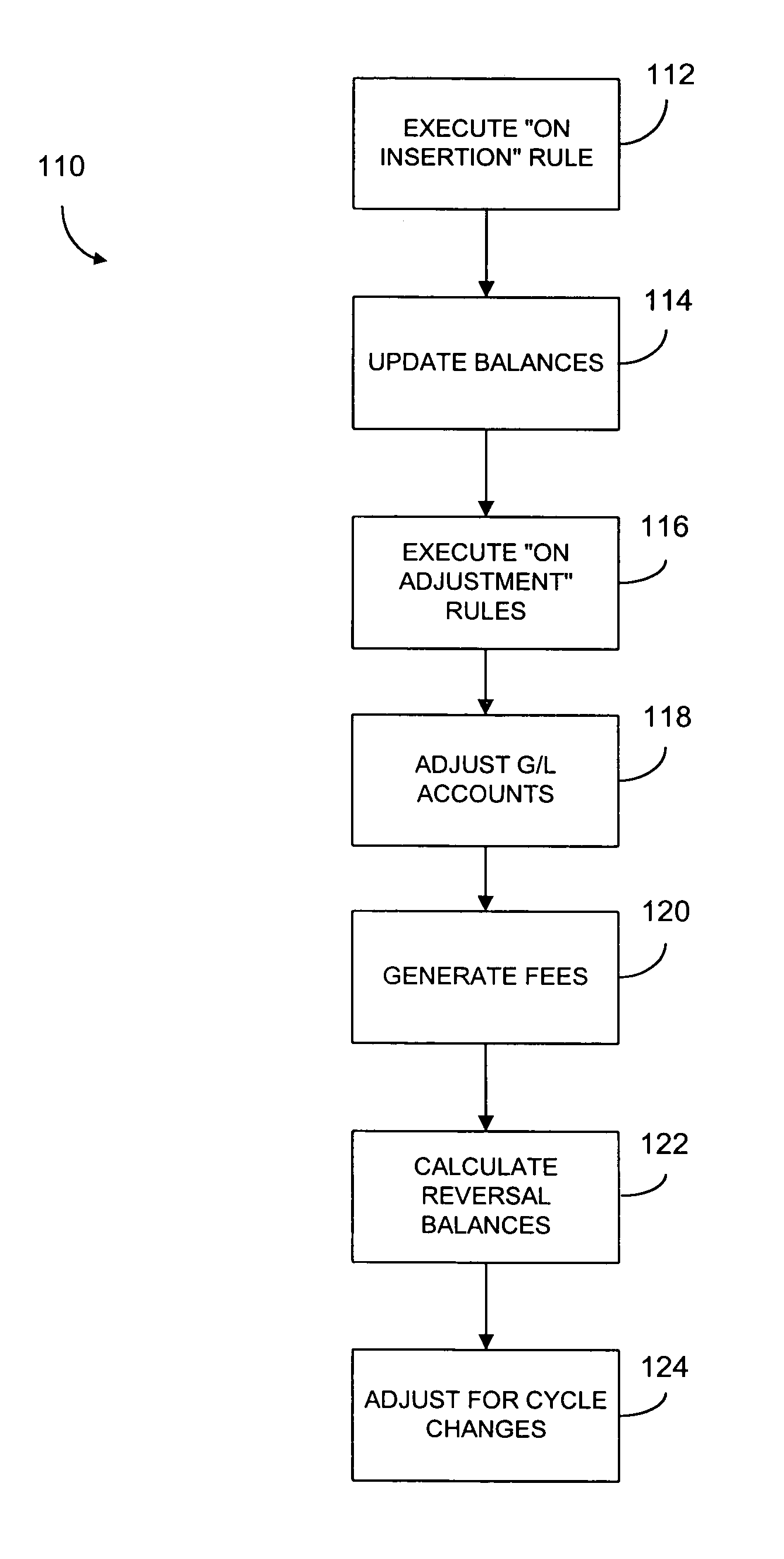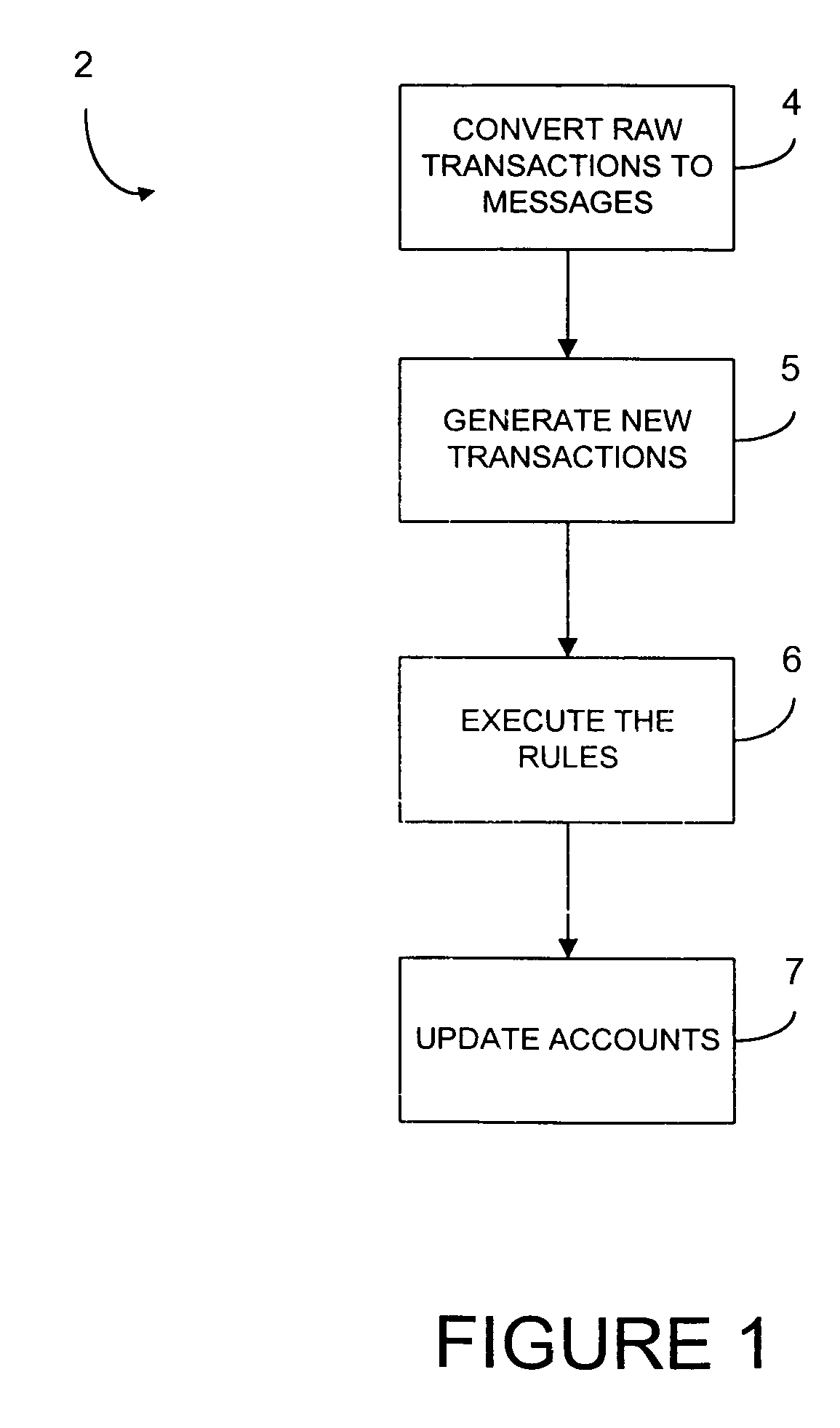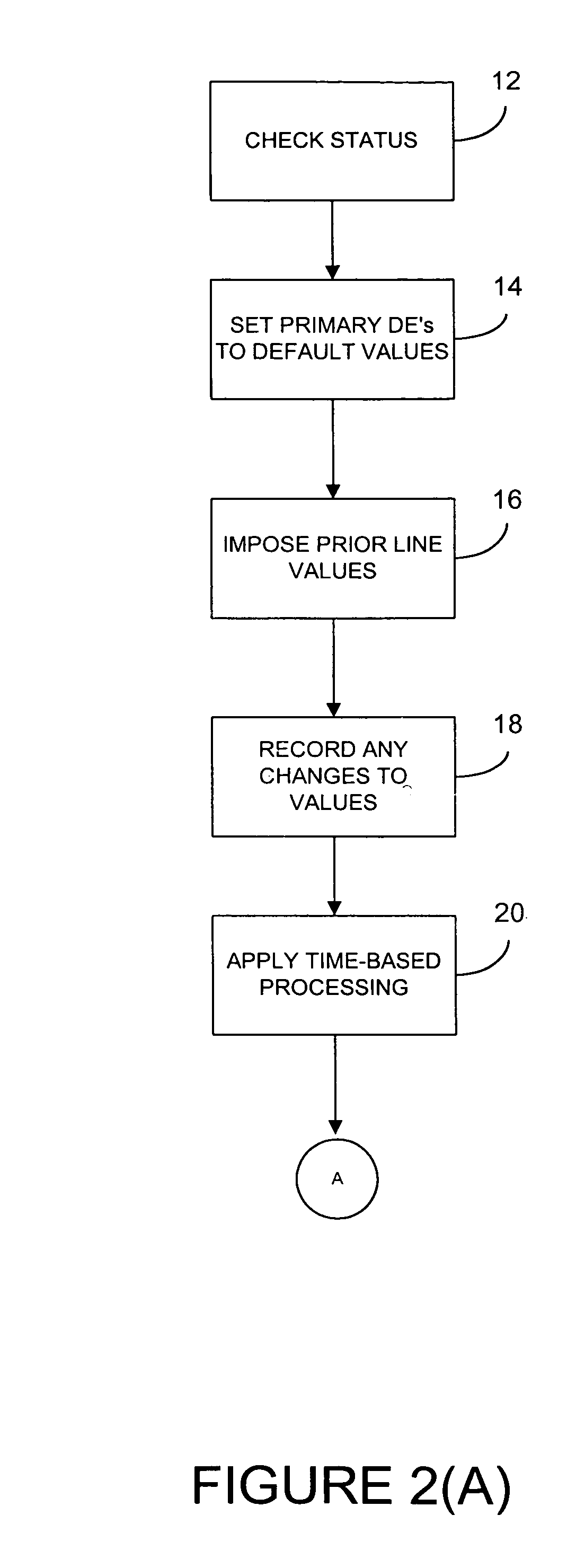Methods and systems for managing financial accounts
a financial account and management system technology, applied in the field of methods and systems for managing financial accounts, can solve the problems of complex management of accounts held by a company, requiring sophisticated processing systems, and conventional processing systems with several limitations, so as to reduce the number of input/output operations, improve the overall processing of accounts, and facilitate the use of financial accounts
- Summary
- Abstract
- Description
- Claims
- Application Information
AI Technical Summary
Benefits of technology
Problems solved by technology
Method used
Image
Examples
case 1
[0209]Switch (trancode) {[0210] purchase_amount tran_amount; break;[0211]Case 2: return_amount=tran_amount; break;[0212]Etc.}
[0213]8. Functions Available to Rules
[0214]The following functions are examples of some functions that are preferably provided for the rules to perform their function.
[0215]Find transaction: This is a simple version of a Select lines function described in greater detail below. The order of the parameters includes: forward, backward, start, and end. This controls the order of the search, from the current transaction into the future, from the current transaction into the past, from the earliest dated transaction into the future, or from the latest dated transaction into the past. The start date, if provided, is used as the starting point of a forwards or backwards search. The number argument says whether to find the first transaction that meets the criteria and then stop, or to find all transactions that meet the criteria. The test parameter is a conditional exp...
PUM
 Login to View More
Login to View More Abstract
Description
Claims
Application Information
 Login to View More
Login to View More - R&D
- Intellectual Property
- Life Sciences
- Materials
- Tech Scout
- Unparalleled Data Quality
- Higher Quality Content
- 60% Fewer Hallucinations
Browse by: Latest US Patents, China's latest patents, Technical Efficacy Thesaurus, Application Domain, Technology Topic, Popular Technical Reports.
© 2025 PatSnap. All rights reserved.Legal|Privacy policy|Modern Slavery Act Transparency Statement|Sitemap|About US| Contact US: help@patsnap.com



